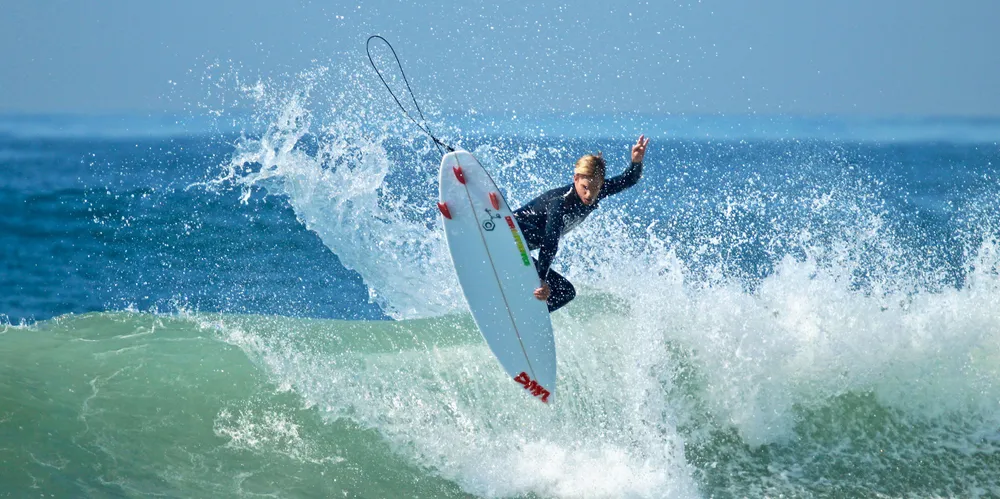'This will set the bar' | All eyes on California for historic first US floating wind auction
ANALYSIS | As bumper 43 applicants line up, experts say milestone round is test for industry's risk appetite while industrialisation holds key to long term success

The US’ flagship west coast deepwater wind auction set to kick off tomorrow (6 December) is the nation’s most eagerly anticipated seabed leasing round since the New York Bight spurred a $4bn-plus bidding bonanza, and marks the opening of a whole new frontier for the global floating sector.
The US government and the state of California will spur at least 4.6GW – and likely far more – of new capacity and a multibillion dollar investment wave, playing a huge role in the state’s massive climate and renewable energy ambitions that include a near term target of 2-5GW by 2030 and 25GW by 2045.
The leasing round begins 6 December at 0700 Pacific Standard Time (1000 Eastern Standard Time), with BOEM anticipating it may extend over several days. Bids start at $6m and provisional winners will be announced at its conclusion, but the results may take several weeks before being certified.
California’s mid-century floating goal leads the nation but is not legally mandated. The state does have aggressive decarbonisation mandates of 40% reduction in greenhouse gas emissions off 1990 baselines by 2030, and economy-wide carbon neutrality by 2045, but is technologically agnostic.
The state leads the US with 27GW of utility and residential solar, but this poses grid balancing challenges.
Musial said California understands that floating wind is going to be needed, “but to what degree is still in question.”
The state also lacks a clear pathway to market, as it doesn’t have a central authority capable of organising procurement.
“These first few leases will set a bar for where things go,” said Musial.
Diverse range of bidders
This “reflects both confidence in the direction of national and state energy goals [and] the knowledge that offshore wind has to be a significant part of the solution,” said Theodore Paradise, chief policy and legal officer in the US for Swedish floating wind developer Hexicon, which is also a qualified bidder.
The auction is heavily focused on delivering local economic benefits, with 10% of the bid value available as community benefit agreements and 20% towards supply chain and workforce development, and those successful in obtaining lease options will need to invest in significant supply chain plans as well as bonuses directly to affected communities.
Port, transmission, and supply chain bottlenecks
California needs substantial supply chain and port investment, without which successful leaseholders will face myriad challenges advancing their projects.
Marshalling ports are “absolutely necessary for projects to get built,” said Musial, but Morro Bay has no readily available port nearby, with the only harbour actively developing a floating wind programme at Humboldt Bay, nearly 500 miles (800km) away.
Joshua Singer, lead on offshore wind ports for engineering consultancy Moffat & Nichol, told a recent conference, “There are no other ports on southern California that can be readied in time.”
Morro Bay’s three leases hold around a gigawatt each, and any port capacity built in the vicinity would need to be shared, adding to the risk, said Musial.
California floating wind auction qualified bidders
547 Energy
AEUG Offshore
Algonquin Power Fund (America)
Arevia Power
Avangrid Renewables
BP US Offshore Wind Energy
California North Floating
California Offshore Wind Development
California South Floating
Castle Wind
Central California Offshore Wind
Cademo Corporation
Cierco Project Corporation
Clearway Renew
Corio OSW Investments
CPV Offshore Wind
EDF Renewables Development
EDPR Offshore North America
Equinor Wind US
Ferrovial Energy US
GW Offshore Wind
Hexicon USA
Ideol USA
Invenergy California Offshore
JERA Renewables NA
Marubeni Power International
Mission Floating Wind
Northcoast Floating Wind
Northland Power America
Orsted North America
Pacific Moon Offshore Wind
Pacific Offshore Wind
Redwood Coast Energy Authority (RCEA)
Redwood Coast Offshore Wind
RWE Renewables Development
RWE Offshore Wind Holdings
Seaglass Offshore Wind I
Seaglass Offshore Wind II
Shell New Energies US
SSE Renewable North America Offshore Wind
TotalEnergies Renewables USA
US Mainstream Renewable Power
wpd offshore Alpha
Humboldt WEA, conversely, has existing transmission infrastructure to handle only some 150MW of offshore wind power, a tenth of its 1.5GW capacity potential.
“They're probably going to need more lease areas” to drive investment in the grid, Musial noted.
Supply chain investment is another question for the industry. The state has large-scale industrial ports at Long Beach and Los Angeles, but these are already bursting at the seams with logistics activity.
Building supply chain capacity instead of shipping components in from Asia or the US east coast could drive mass investment and jobs creation.
American Job Project sees GDP impacts from construction alone driving $16.2bn to $39.7bn in California, while the University of Southern California’s Schwarzenegger Institute estimates job gains from developing 10GW by 2040 totalling up to 195,000 job-years.
'Global epicentre'
Still, the industry’s success will depend on cost reductions that are being challenged by surging inflation, rising interest rates, and relentless supply chain disruptions.
Musial said cost reductions depend on large-scale industrialisation on the same turbine platform.
“The industry needs to mature the platform that they’ve developed at the 15MW scale and optimise and industrialise around that point,” he said.
“We can gain huge cost reductions just through the industrialisation of one specific platform, the standardisation of those parts in serial production, and the learning that goes on at those levels,” he said.
(Copyright)